The smelting and refining industry plays a critical role in transforming raw ores into pure metals used across numerous sectors. These complex processes involve high-temperature chemical reactions, melting, and purification steps that generate a variety of hazardous gases, including toxic, flammable, and corrosive emissions. Ensuring safety and environmental compliance requires reliable gas leak detection systems tailored to the unique risks of each stage—from roasting and smelting to refining and metal casting.
Our fixed and portable gas detectors provide comprehensive monitoring solutions to safeguard personnel, protect equipment, and maintain operational continuity in this challenging industrial environment..
Here are some of the key processes in the smelting & refining industry.
Ore Preparation & Concentration
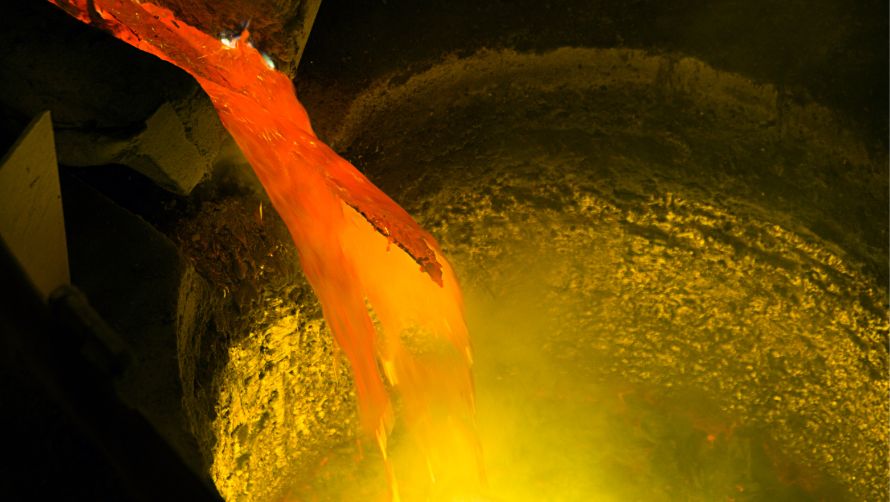
Ore preparation and concentration is the initial stage in smelting and refining operations. It involves converting mined ore into a concentrated form that is suitable for smelting. The process typically includes crushing and grinding to reduce particle size, followed by concentration methods such as flotation, gravity separation, or magnetic separation to isolate valuable minerals. In some operations, chemical leaching (e.g., acid leaching) is used to extract metals from ores. Sintering or pelletizing may follow to prepare the material for high-temperature processing.
This stage often involves open handling of materials and the use of chemicals, making it a critical area for gas detection and worker safety.
Types of Gases Present
Sulfur Dioxide (SO2) – Released during the handling or leaching of sulfide ores or from sintered dust. Toxic and corrosive.
Hydrogen Sulfide (H2S) – May be released during leaching of sulfide ores, especially in bioleaching or under anaerobic conditions. Highly toxic.
Ammonia (NH3) – Emitted when ammonia-based leaching or flotation reagents are used. Irritant and toxic.
Acid Vapors (e.g., HCl, H2SO4) – Can be released during chemical leaching, reagent mixing, or from storage tanks. Corrosive and harmful.
Dust with Heavy Metals – While not a gas, airborne particulates may carry toxic metals like arsenic or lead and require particulate monitoring.
Leaching Tanks & Reactors
Used for dissolving target metals using acids or reagents. Gases like SO₂, H₂S, or acid vapors may be released during agitation, aeration, or chemical reaction.
Fixed Point Detectors: Above tank surfaces and near vent outlets to detect rising or released gases. Additional detectors at worker breathing zones.
Portable Detectors: Operators should carry multi-gas detectors when sampling or performing maintenance near tanks or pipes.
Reagent Storage & Mixing Areas
Storage and transfer of acids (HCl, H₂SO₄), ammonia, or flotation chemicals that can emit toxic vapors or leak from containers.
Fixed Point Detectors: Near chemical tanks, mixing stations, and along transfer pipelines. Enclose areas with leak detection at low levels (for heavier-than-air gases).
Portable Detectors: Technicians should use portable detectors when handling drums, opening valves, or working on pipelines.
Drying & Sintering Units
Employed to remove moisture or agglomerate ore. May emit SO₂, dust, or other fumes depending on ore type.
Fixed Point Detectors: At the stack, near the feed chute, and around ductwork or gas off-take points.
Portable Detectors: Carried during filter maintenance, inspection, or cleaning of emission ducts.
Flotation Cells & Chemical Dosing Points
Chemical reagents are used to selectively separate minerals. These can release NH₃ or VOCs.
Fixed Point Detectors: Positioned above flotation tanks and around reagent dosing pumps.
Portable Detectors: For manual sampling, valve checks, or reagent replacement work.
Smelting, Roasting & Slag Handling
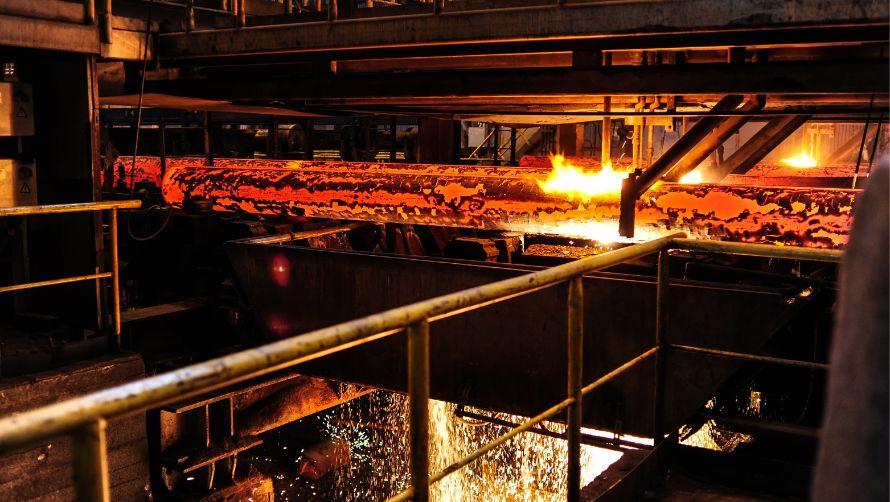
This stage involves the high-temperature chemical transformation of concentrated ore into crude metal and slag. Roasting is used to oxidize sulfide ores, releasing sulfur dioxide (SO₂), while smelting (in blast, electric, or flash furnaces) melts the ore to separate metal from gangue. Fluxes are added to form a slag layer that traps impurities. The molten metal and slag are tapped from the furnace, with slag often cooled and disposed of or reused.
These thermal processes are major sources of gas emissions, including toxic and flammable gases, as well as metal fumes and dust. Proper gas detection is critical around furnace operations, slag pits, and tapping stations.
Types of Gases Present
Sulfur Dioxide (SO2) –Emitted in large volumes during roasting and smelting of sulfide ores. Toxic, corrosive, and harmful to the respiratory system
Hydrogen Sulfide (H2S) – May be emitted from residual sulfides in ores or slag. Extremely toxic and flammable.
Carbon Monoxide (CO) – Generated from incomplete combustion or reduction reactions inside furnaces. Highly toxic and flammable
Nitrogen Oxides (NOx) – Formed at high furnace temperatures, especially in air-blown systems. Toxic and contributes to smog.
Metal Fumes & Dust – Volatilized metals like arsenic, lead, or zinc can be released, especially during tapping and slag handling..
Roasters & Furnace Chambers
Core areas where ore is oxidized or melted. Generate large volumes of SO₂, CO, and NOx.
Fixed Point Detectors: At furnace hoods, stack bases, and tapping floors. Place CO and SO₂ detectors at operator level.
Portable Detectors: Essential for operators during inspections, maintenance shutdowns, or slag tap operations.
Tapping & Slag Discharge Areas
Sites where molten metal and slag are discharged. Release heat, fumes, and toxic gases like CO and SO₂.
Fixed Point Detectors: Near tapping ports, slag runners, and ventilation outlets.
Portable Detectors: Mandatory for workers collecting slag samples or working close to open tapholes or slag pits.
Slag Cooling & Handling Zones
Hot slag is cooled by air or water, potentially releasing steam, dust, and trapped gases like H₂S.
Fixed Point Detectors: At slag pits, cooling bays, and conveyor transitions. Install H₂S and dust monitors as needed.
Portable Detectors: Required when inspecting cooled slag or working near water-slag contact zones.
Off-Gas Ducting & Transfer Systems
Ducts and pipes that transport furnace off-gases to treatment systems. Leaks may expose workers to SO₂ and CO.
Fixed Point Detectors: Along ductwork joints, expansion joints, and fan housings.
Portable Detectors: Used during duct inspection, damper adjustment, or when opening access doors
Refining & Secondary Metal Recovery
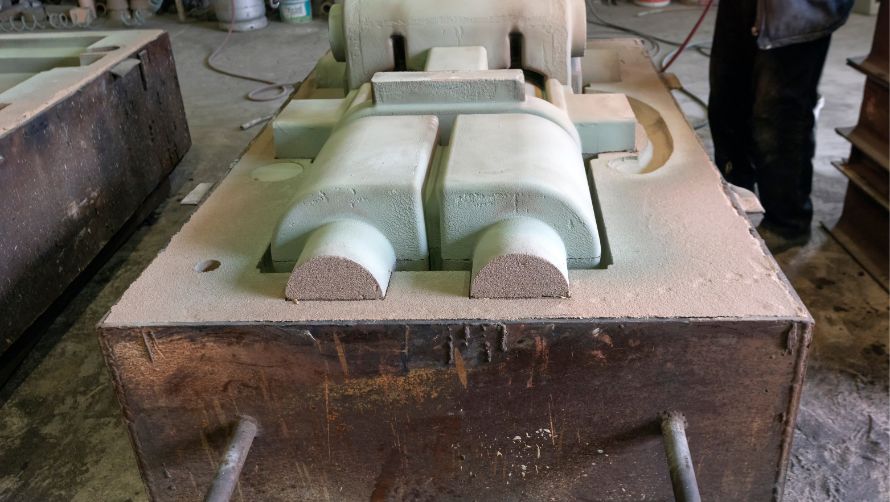
Refining is the stage where crude metal obtained from smelting is purified to remove impurities and achieve desired metal quality. This can include fire refining (heating and oxidizing impurities), electrorefining (using electrolytic cells), and chemical refining (acid leaching or chlorination). Secondary metal recovery involves recycling scrap metal and recovering metals from waste streams. These processes often use chemical reagents and generate hazardous gases and fumes. Careful control and detection of gas leaks is critical to ensure worker safety and process integrity.
Types of Gases Present
Sulfur Dioxide (SO2) –Emitted during fire refining and some chemical treatments.
Chlorine (Cl2)– Used in chemical refining and chlorination steps, highly toxic and corrosive.
Hydrogen (H2) – Produced during electrorefining and chemical reactions; highly flammable and explosive.
Sulfuric Acid Mist (H₂SO₄ mist) – Released from acid leaching and refining tanks; corrosive and harmful.
Volatile Organic Compounds (VOCs) – Released during scrap melting and fluxing operations.
Dioxins and other hazardous fumes – Possible during chemical refining and burning of scrap.
Electrorefining Cells
Electrolytic baths where metal ions are refined; hydrogen gas is released at the cathode.
Fixed Point Detectors: Near cell openings, ventilation ducts, and exhaust hoods for H₂ detection.
Portable Detectors: Used by operators when inspecting or maintaining cells to monitor H₂ buildup.
Chemical Refining Tanks & Chlorination Vessels
Tanks where acid leaching or chlorination reactions occur, potentially releasing Cl₂, SO₂, and acid mists.
Fixed Point Detectors: Above tanks, near vents, and at worker breathing heights. Install chlorine and SO₂ sensors.
Portable Detectors: Carried during tank sampling, reagent addition, and maintenance.
Scrap Melting Furnaces
Melting scrap metal can emit VOCs, sulfur compounds, and metal fumes.
Fixed Point Detectors: At furnace hoods and exhaust stacks to monitor VOCs and toxic gases.
Portable Detectors: Operators should carry detectors when feeding scrap or during furnace cleaning.
Reagent Storage & Transfer Areas
Storage of acids, chlorine, and other chemicals for refining processes. Leak risk of toxic vapors.
Fixed Point Detectors: Near chemical storage tanks, piping, and transfer pumps.
Portable Detectors: For workers handling drums, pumps, and transfer lines.
Gas Treatment & Emission Control
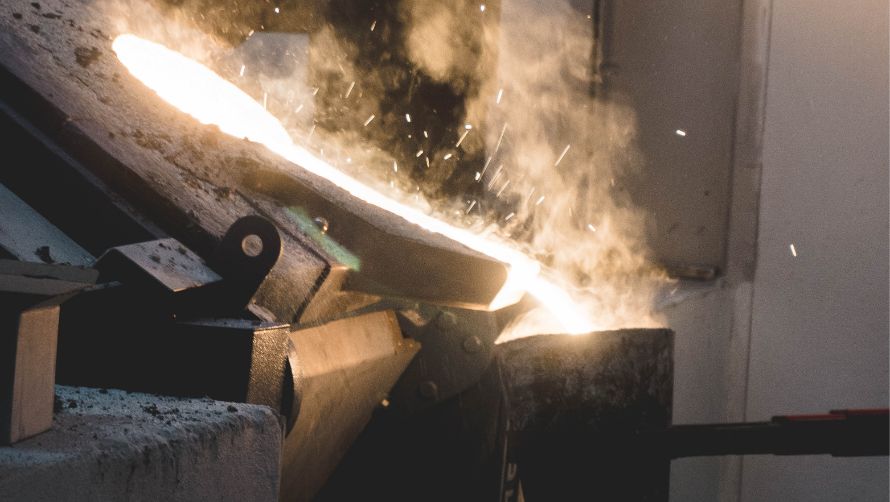
This process handles the collection, treatment, and control of gases emitted during smelting and refining to reduce environmental pollution and comply with regulatory standards. Typical gas treatment involves cooling off-gases, removing dust and particulate matter using filters or electrostatic precipitators, scrubbing sulfur dioxide and acid gases using wet or dry scrubbers, and recovering by-products like sulfuric acid. Proper management of gas streams is essential to prevent toxic and flammable gas leaks and ensure safe plant operation.
Types of Gases Present
Sulfur Dioxide (SO2) –Main pollutant from roasting and smelting, treated in scrubbers.
Hydrogen Sulfide (H2S)– May be present in raw gas streams, toxic and flammable.
Carbon Monoxide (CO) – Can be present in off-gases from furnaces.
Sulfuric Acid Mist – From wet scrubber systems; corrosive and hazardous.
Nitrogen Oxides (NOx) – Formed during high-temperature combustion processes.
Gas Ducting & Transfer Lines
Pipelines carrying raw and treated gases to and from treatment units; potential leaks at flanges, valves, and expansion joints.
Fixed Point Detectors: Along duct runs, especially near joints, valves, and fan housings.
Portable Detectors: Used during inspection, maintenance, and duct cleaning activities.
Scrubber Units & Gas Absorbers
Equipment for gas scrubbing where leaks of SO₂ and acid mist can occur, especially around pumps and nozzles.
Fixed Point Detectors: At scrubber inlets/outlets, pump areas, and worker zones.
Portable Detectors: During chemical dosing, pump maintenance, and tank entry.
Gas Cleaning Filters & Electrostatic Precipitators
Devices for removing dust and particulates; potential leaks of dust and gas during filter cleaning or equipment servicing.
Fixed Point Detectors: Near filter housings and dust collection systems.
Portable Detectors: During cleaning operations or filter replacement.
Sulfuric Acid Recovery Plants
Units where SO₂ is converted into sulfuric acid; risk of acid mist and SO₂ leaks.
Fixed Point Detectors: Near converters, storage tanks, and transfer pumps.
Portable Detectors: For workers handling acid or performing equipment maintenance.
Metal Casting, Cooling & Storage
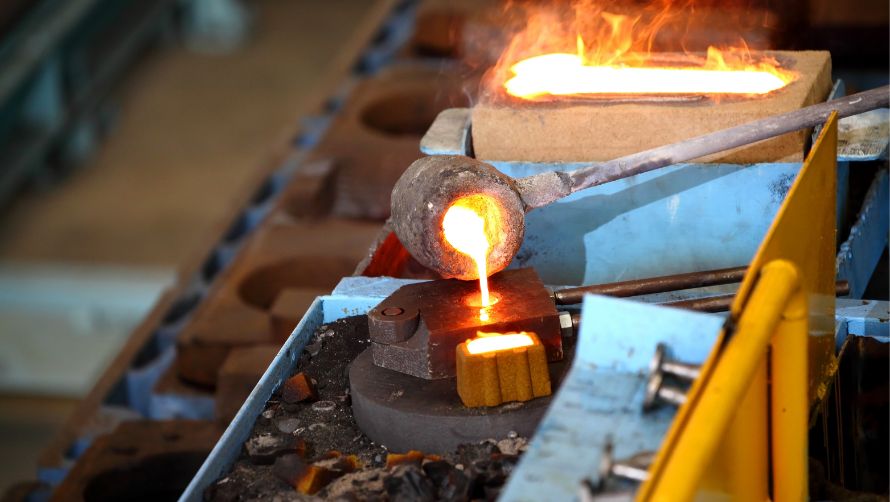
After refining, molten metal is cast into ingots, billets, or other shapes for further processing or shipment. The casting process involves pouring molten metal into molds followed by controlled cooling. The handling and storage of molten metal require stringent safety measures due to high temperatures and potential gas emissions. During cooling, gases and fumes may evolve, and hazardous atmospheres can develop in enclosed casting areas or storage warehouses.
Types of Gases Present
Carbon Monoxide (CO) – May be emitted from burning fluxes or during mold heating.
Volatile Organic Compounds (VOCs) – From binders, coatings, or flux materials used in molds.
Hydrogen (H2) – Can be generated in certain metal reactions during cooling.
Metal Fumes and Dust – Fine particulates generated during pouring and cooling.
Casting Molds & Pouring Stations
Points where molten metal is poured; fumes and VOCs may be emitted.
Fixed Point Detectors: Near mold areas and exhaust hoods to detect CO and VOCs.
Portable Detectors: Operators should carry detectors during manual pouring or mold preparation.
Cooling Bays & Ventilation Areas
Zones where cast metal cools; stagnant air pockets can allow accumulation of gases.
Fixed Point Detectors: At worker breathing height and ventilation outlets.
Portable Detectors: For periodic area monitoring during inspections.
Storage Warehouses & Handling Zones
Enclosed storage of metal products where gases might accumulate due to off-gassing or poor ventilation.
Fixed Point Detectors: At entry points, air return ducts, and storage aisles.
Portable Detectors: Used when workers enter enclosed storage or handling areas.
Utilities, Gas Supply & Support Systems

Utilities and support systems provide essential services such as compressed air, fuel gas, oxygen, and steam for smelting and refining operations. Gas supply networks distribute fuels like natural gas, oxygen for combustion, and inert gases for safety. These systems include boilers, compressors, pipelines, and storage tanks. Leak detection is critical as fuel gases and oxygen pose fire, explosion, and toxicity hazards. Proper monitoring ensures safe plant operation and quick response to leaks.
Types of Gases Present
Carbon Monoxide (CO) – Can be present in fuel gas lines or produced during combustion.
Hydrogen (H2) – Used as fuel or reductant; highly flammable and explosive.
Natural Gas (Methane, CH₄) – Primary fuel source; highly flammable and explosive.
Oxygen (O2)– Used in combustion and refining; leakage increases fire risk.
Compressed Air & Nitrogen (N2) – Used for purging and inerting; leaks reduce system efficiency but are less hazardous.
Fuel Gas Pipelines & Valves
Pipelines transporting natural gas or hydrogen fuel to furnaces and boilers. Leak risk at joints, valves, and regulators.
Fixed Point Detectors: Along pipelines, valve stations, and compressor houses. Install methane and hydrogen sensors.
Portable Detectors: For inspection, maintenance, and emergency leak detection.
Oxygen Supply Lines & Storage
High-pressure oxygen cylinders and pipelines feeding combustion or refining units.
Fixed Point Detectors: Near oxygen storage, transfer stations, and combustion areas.
Portable Detectors: Used during cylinder handling, pipeline repairs, or confined space entry.
Boilers & Steam Generators
Equipment that uses fuel gases; leaks may release CO or unburned fuel gases.
Fixed Point Detectors: Boiler rooms, fuel supply points, and exhaust stacks.
Portable Detectors: Carried by operators during inspection or maintenance.
Compressed Air & Nitrogen Systems
Piping and compressors for plant utilities; leaks mainly affect efficiency.
Fixed Point Detectors: At compressor stations and key pipeline junctions (optional gas detection if inert gas hazards exist).
Portable Detectors: Used during compressor maintenance or line inspections.
